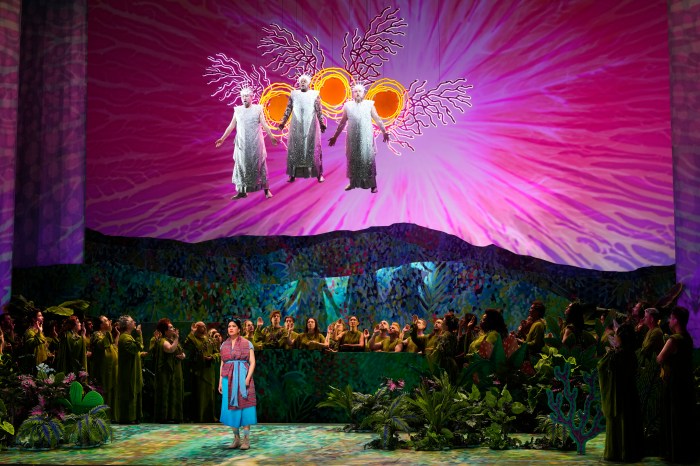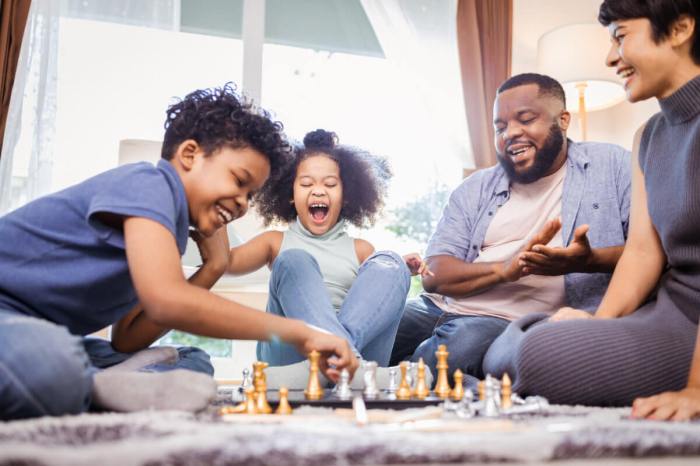
After Hurricane Maria devastated Puerto Rico in September 2017, Kenia Ciuro, Glenda Martes and Sheila Molina Quinones were displaced to the Bronx. After their FEMA housing expired, they were left homeless in New York City.
For eight weeks last year, Bronx filmmaker Nadia Hallgren captured the tribulations of these three close families as they scrambled to find shelter before their temporary FEMA housing vouchers ran out. Their stories are told in the 40-minute documentary "After Maria," which hit Netflix Friday.
"This is not just a story about a hurricane. This is a story about friendship, about women, moms who took charge of their families when they saw things were getting dire," says Hallgren.
In the final days of the federal agency’s Transitional Shelter Assistance program last March, those still suffering from the devastation of Maria rallied on the streets of New York City, claiming their government had failed them. The three women featured in "After Maria" spent their final days in a Norwood hotel, struggling to get answers from FEMA representatives and calling friends and relatives to ensure their children would be taken care of if they no longer had a safe place to sleep.
The Ciuro, Martes, Quinones families were among the more than 130,000 Puerto Ricans who fled to areas like Bismarck, North Dakota, Orlando, Florida and New York City in the months after the Category 3 hurricane demolished their homes.
Below, the filmmaker discusses what it was like to shadow these women in a critical time in their lives and tells us where they are now.
You have three strong women leading us through this story that’s affecting so many displaced families. How did you meet them and what about their stories stood out to you?
We actually went on a pretty incredible journey to find them. We had an idea of the story we wanted to tell and my creative partner and I, we got a list of all the hotels the federal government was paying for. Basically, the FEMA supported hotels in New York City. We drove to every hotel and waited in lobbies, talked to hotel workers. We met with dozens and dozens of families. A community organizer was setting up get-togethers for Puerto Rican families to connect and build a community outside of Puerto Rico because they were feeling pretty isolated.

This one table I sat at at the gathering, Kenia, Glenda, and Sheila were there with their kids. We immediately realized their story was amazing. They didn’t know each other in Puerto Rico and met at the hotel. They were all on the fourth floor and they built this really beautiful friendship together.
Why did you choose to keep this story within their last days in FEMA housing, rather than their arrival in New York City? Did these women shape your story?
We knew there was an issue and we were looking to find someone who could help tell this story. We knew the federal government had set a timeline for all families and that the assistance was going to end. There was a lot of media reporting happening around the crisis, so we were very focused on finding the right way to tell this. We wanted to find the right story that would get people interested in the crisis. A story that has heart and all other elements, like friendship.
Why release it now, almost two years after Maria? Do you feel people who aren’t directly impacted have lost sight of this?
This crisis is ongoing. the families are still in homeless shelters. Not much has changed for them. What is very different and unique for Hurricane Maria survivors and for Puerto Ricans is that, as the documentary explains, they have been treated differently than survivors of Harvey and Katrina. They have not been given access to permanent housing at all. Even though money has been allotted toward them, a lot of it is being held up in red tape and families are still suffering. They haven’t been helped. It’s important this story isn’t forgotten. Since this is amNewYork, for New York City residents, know NYC took on these families. They’re here in city shelters. The government really just dropped the ball. The crisis isn’t over for anyone.

At the end of this documentary, which wrapped about a year ago, these women are homeless. Where are they now?
The families are still in shelters now. What’s especially difficult for them is the language barrier. They come to New York City and don’t understand the language so part of them trying to find their footing here is even just learning how to speak English as an adult. We all know how hard it is to get housing in NYC even if you earn a living wage. Resources that the city has for people in need is just busting at the seams already. The city is trying to support thousands of residents who are coming from the trauma of living through a natural disaster. They come with emotional baggage that the city is not prepared for.
Are these three women still together?
No. They are not together right now. They all stayed in the Bronx in shelters. Single mothers with young children get priority housing in New York City, so Kenia was actually moving out of a shelter and into an apartment placing yesterday.
What message do you hope to leave viewers with?
I really hope viewers understand the relationship that the United States has with Puerto Rico and what that really means when a crisis happens. It comes down to the value of citizenship and how that plays out for Puerto Ricans — when you’re a U.S. citizen, but treated as second class. We see that play out in this film. I hope people see the need for survivors is still tremendous. Folks need help. It’s important to put pressure on our lawmakers and people who have the power.

















